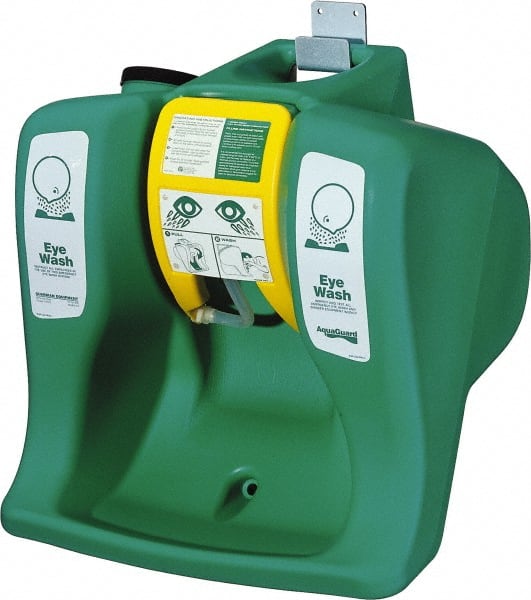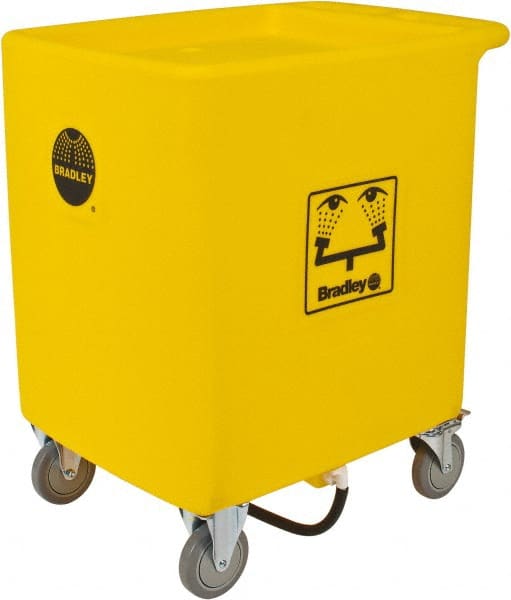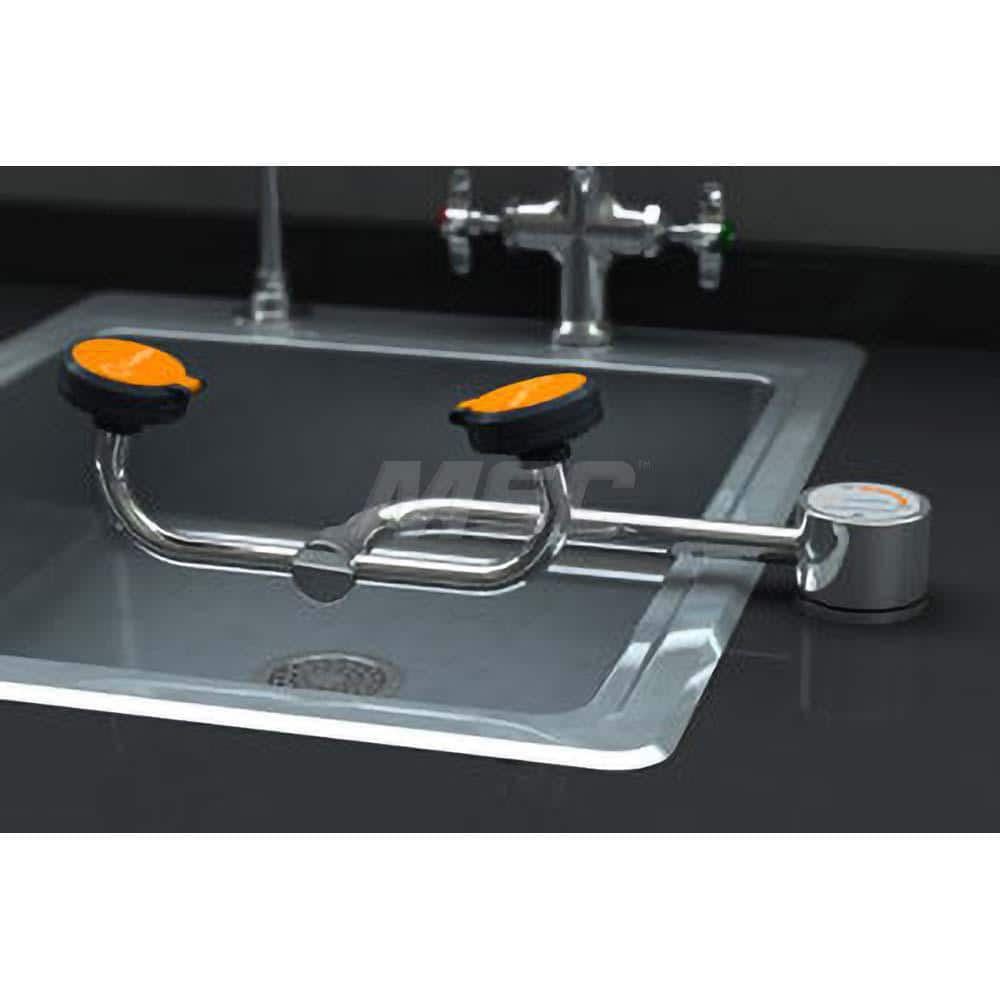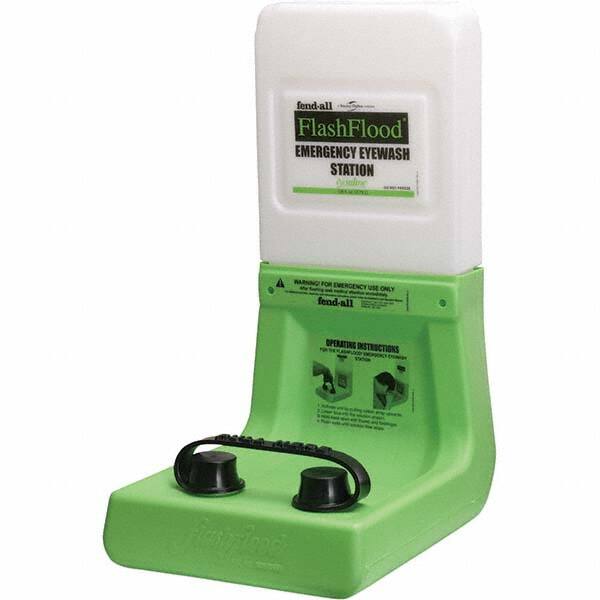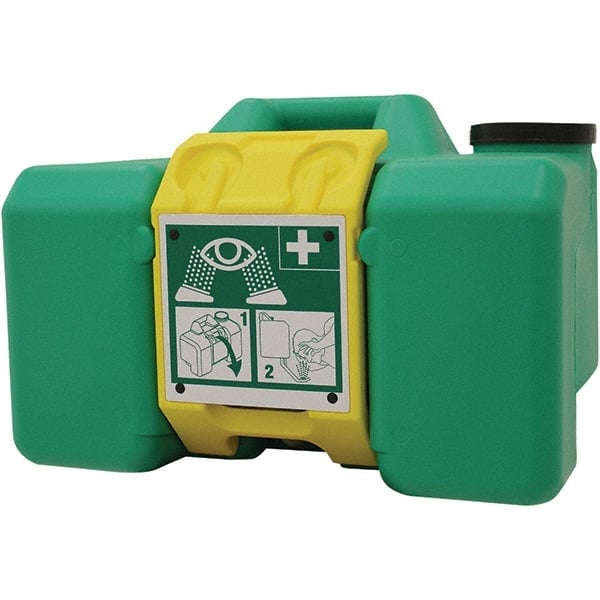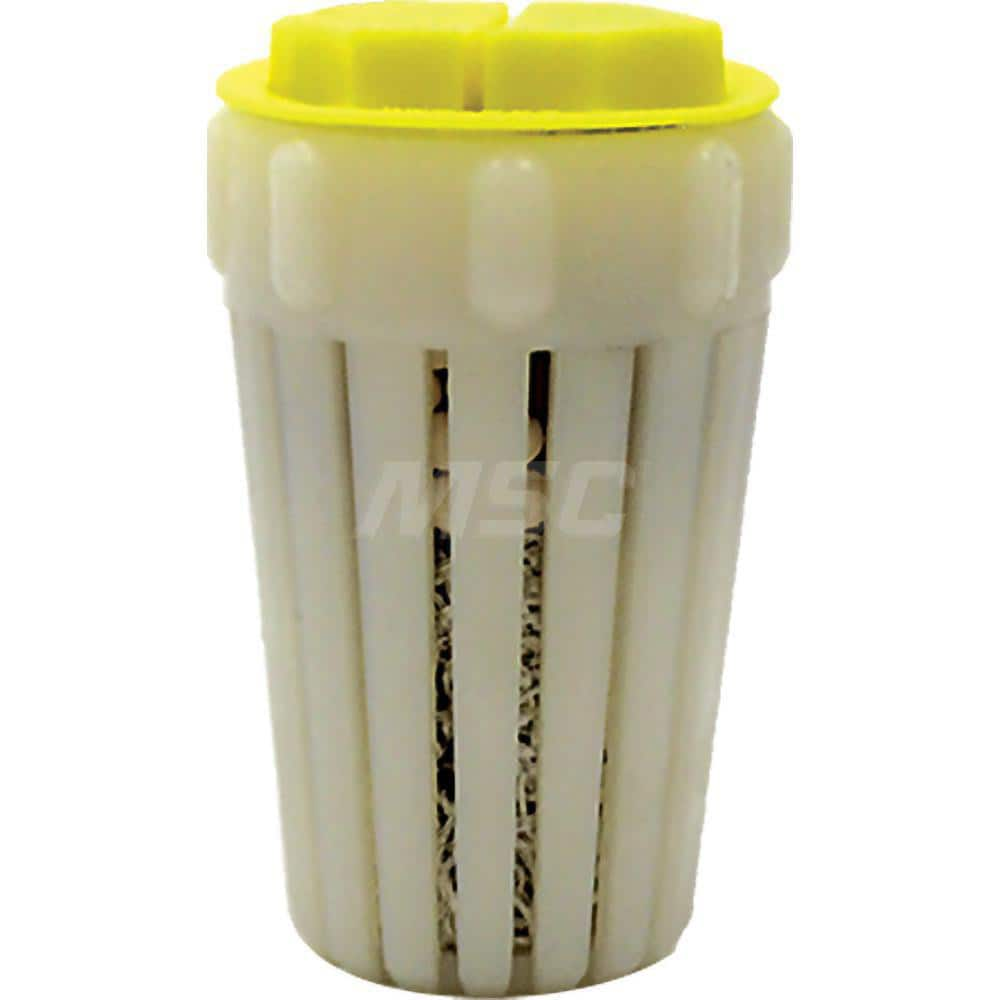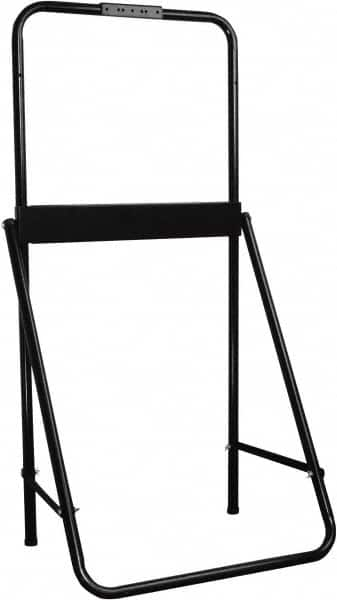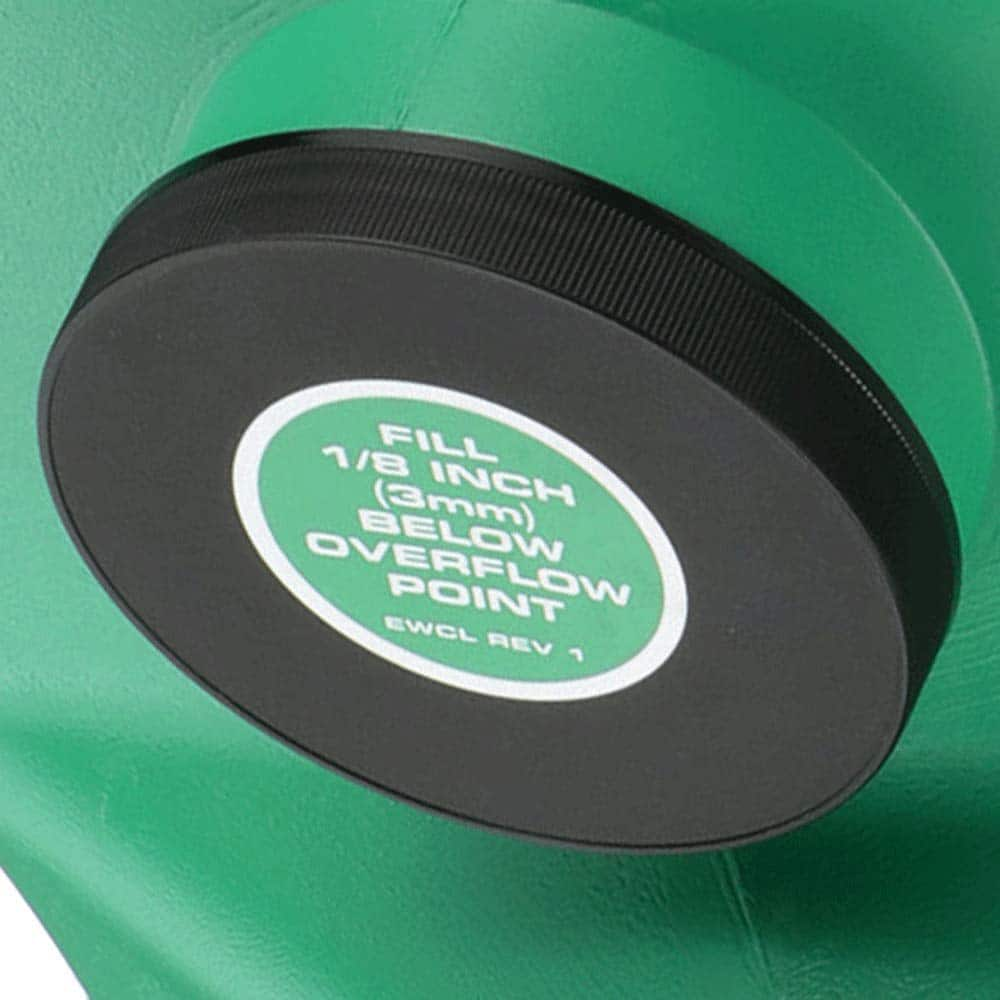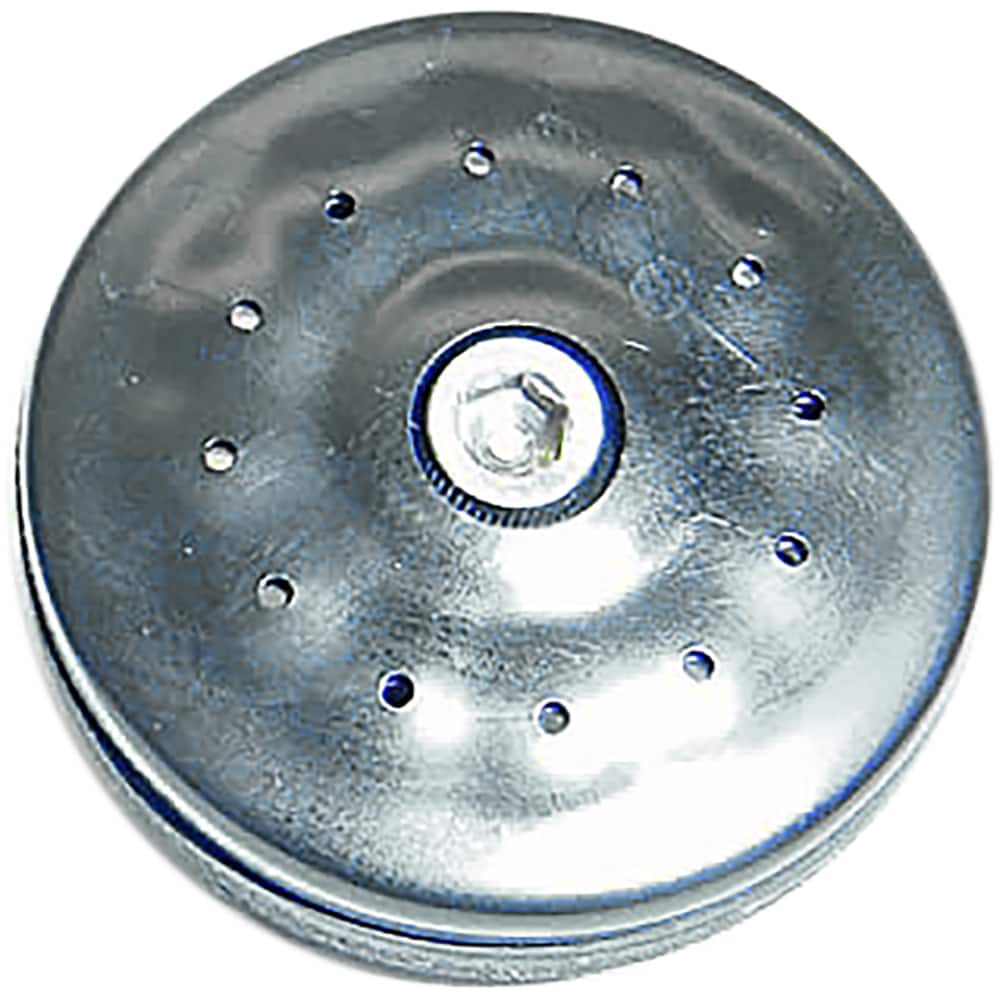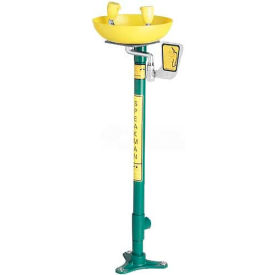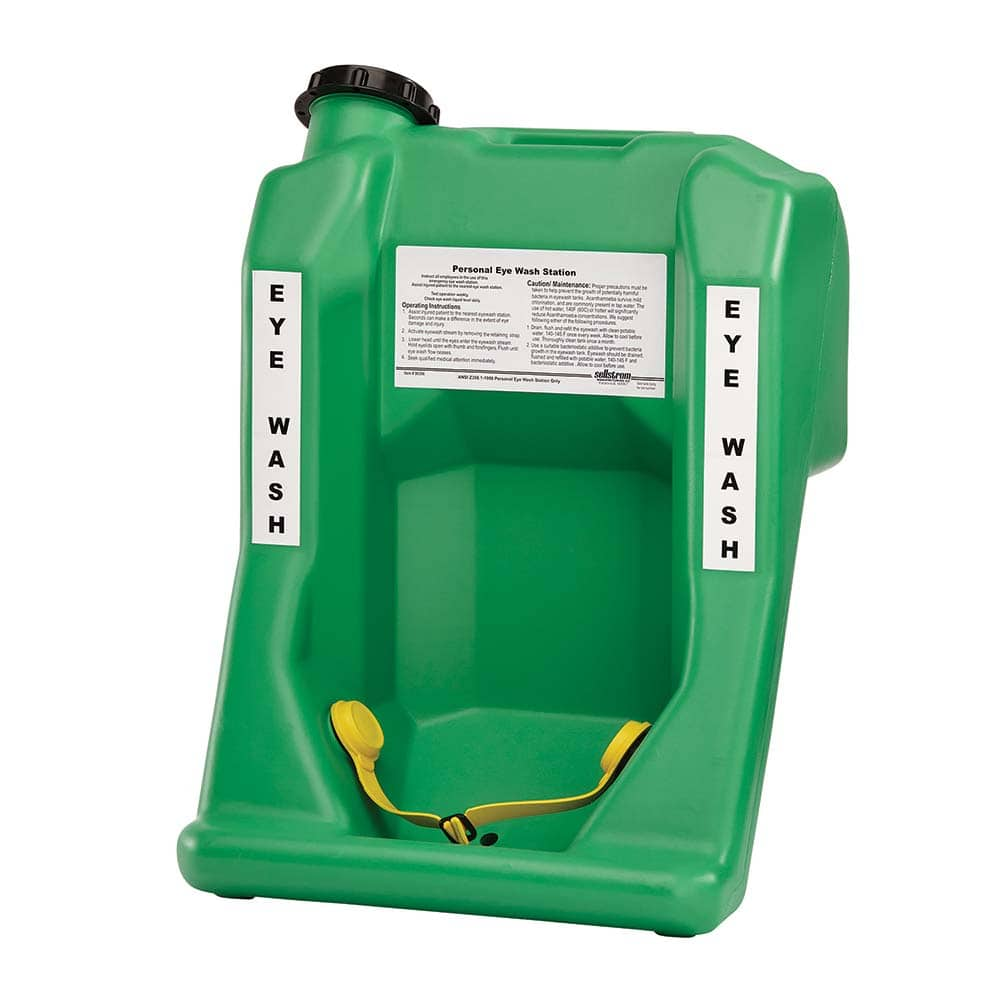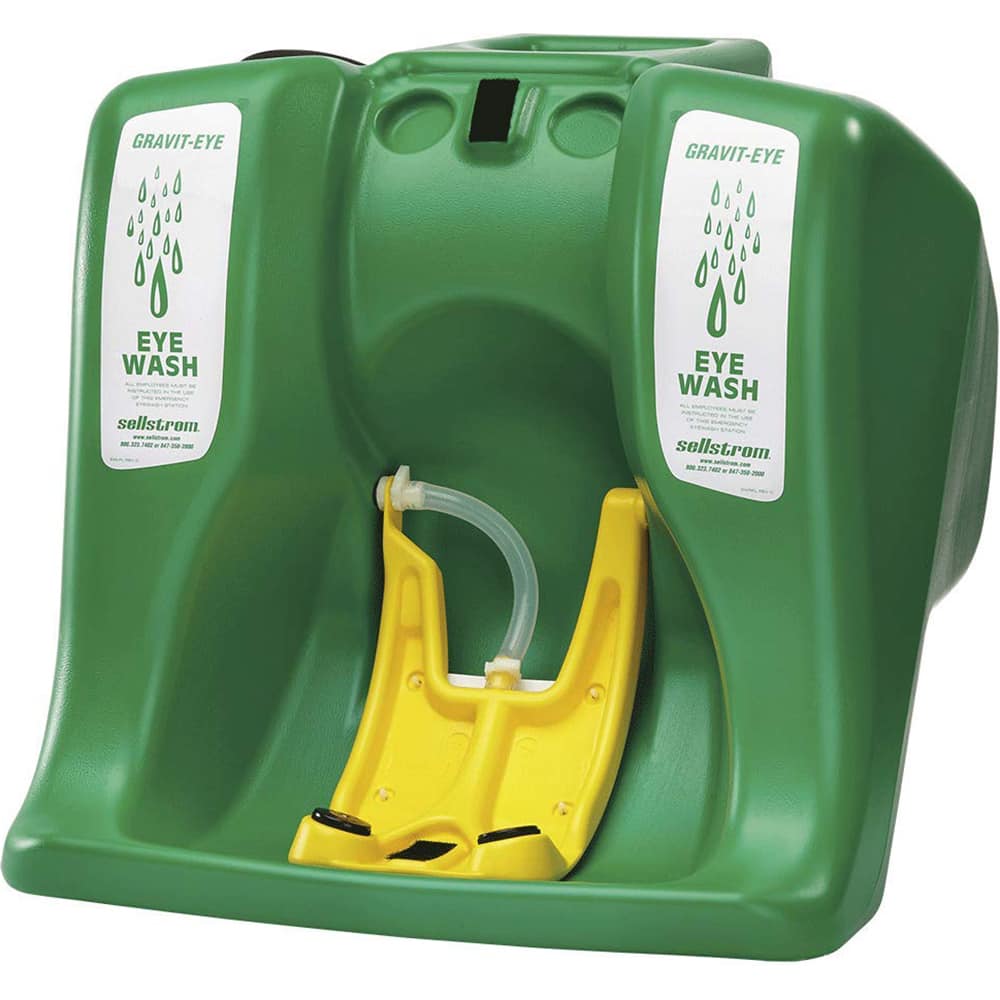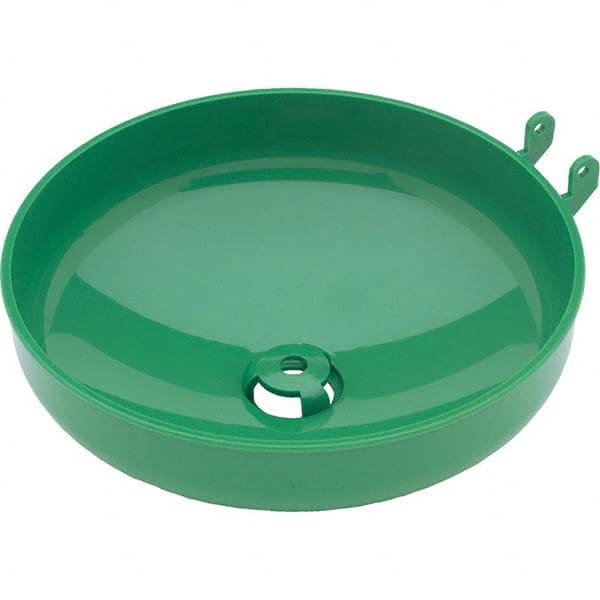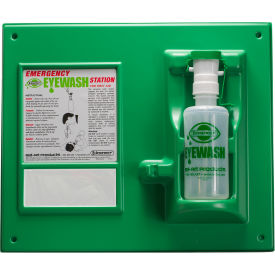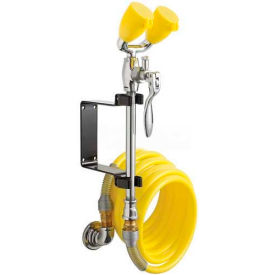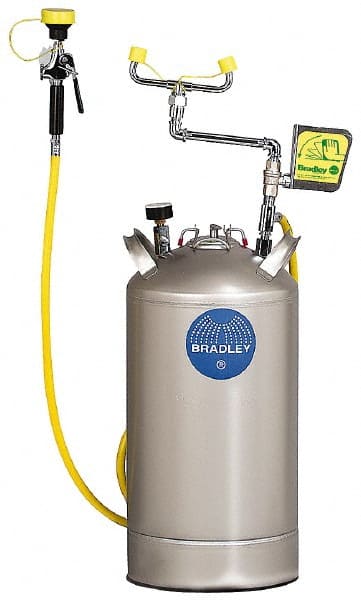Maximize Safety with GoVets Wash Stations: Your Guide to Selection, Installation, and Maintenance
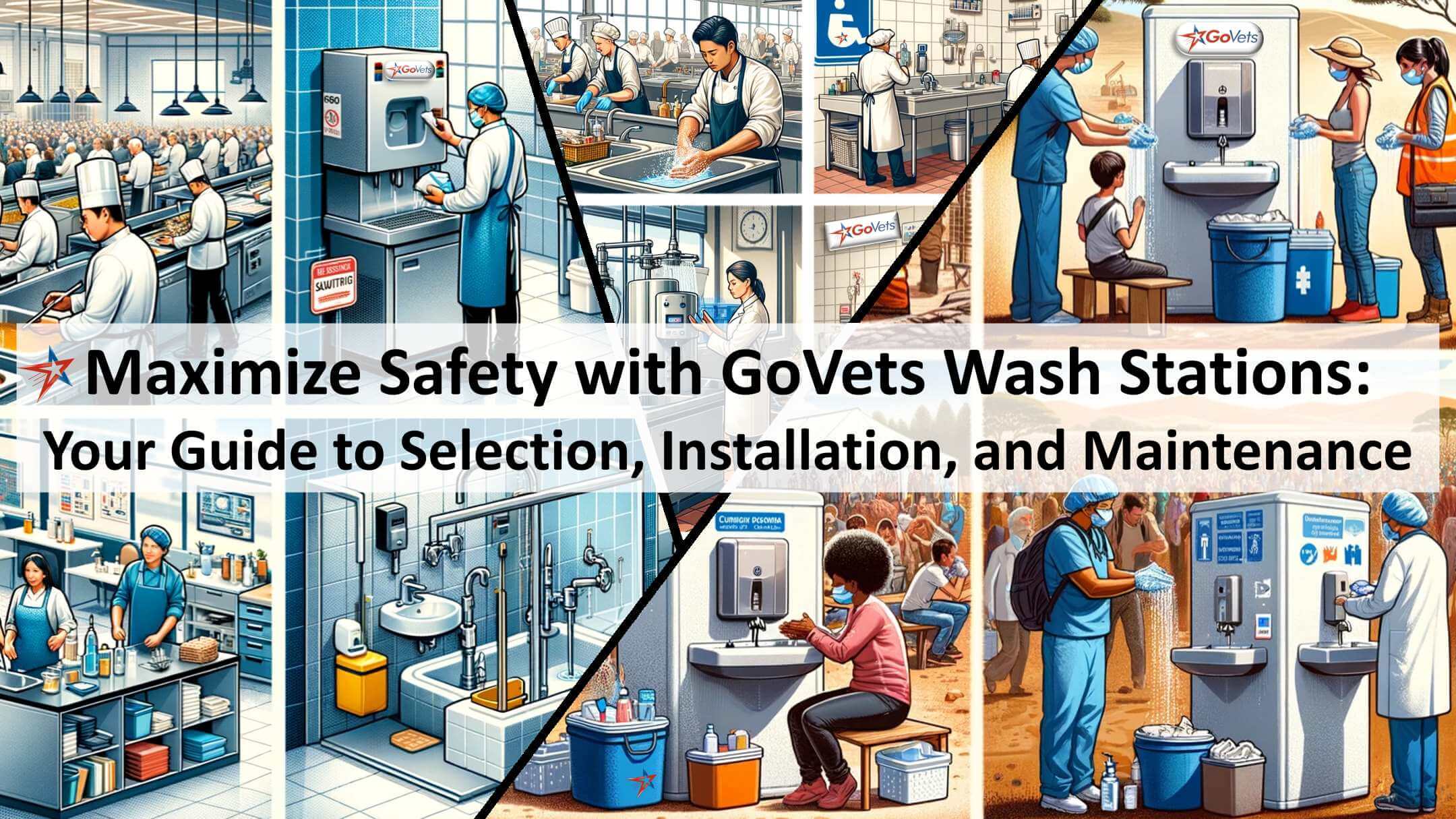
Introduction:
In the wake of heightened awareness around workplace safety and health regulations, the significance of wash stations has never been more pronounced. Industries across the spectrum are realizing the imperative role these installations play not only in compliance but in fostering a culture of well-being. From the bustling kitchens of the culinary world to the precision-driven arenas of scientific laboratories, wash stations stand as silent sentinels of sanitation and safety. Join us as we dive into the various types of wash stations, understand their critical applications across top industries, and unravel the nuances of investing in these vital assets. GoVets is poised to guide you through this essential element of workplace safety, ensuring that your investment is sound, your environment is secure, and your operations are seamless.
Table of Contents:
- Top 10 Advantages of Installing a Wash-Station On-Site
- Top Industries Benefiting from Wash Stations: Applications and Significance
- Understanding Different Types of Wash Stations
- Weighing the Risk and Reward of Investing in Wash Stations
- The Consequences of Not Having Wash Stations On-Site
- Comprehensive Considerations for Investing in Wash Stations
- Installation and Maintenance of Wash Stations
- Conclusion
- Explore More Wash Station Products on GoVets
1. Top 10 Advantages of Installing a Wash-Station On-Site:
Having a wash station available at your facility offers numerous benefits that contribute to the safety, hygiene, and overall well-being of your employees, customers, and visitors. In this section, we will explore the top 10 advantages of having a wash station on-site:
1.1. Emergency Response: Wash stations, especially eye wash and body wash stations, provide a rapid response to accidents involving exposure to hazardous materials. Immediate access to clean water can help minimize the severity of injuries and prevent long-term damage.
1.2. Compliance with Regulations: Many industries are subject to strict safety regulations that require the presence of wash stations. Having these stations in place ensures compliance with regulatory bodies, reducing the risk of fines or legal issues.
1.3. Preventing Contamination: Wash stations play a vital role in preventing contamination in environments where employees work with chemicals, biological agents, or other contaminants. Quick access to cleansing facilities helps reduce the spread of hazardous substances.
1.4. Reducing Infections: Hand sinks and hand wash stations are essential in settings like restaurants and healthcare facilities. Proper handwashing can significantly reduce the transmission of infections, protecting both staff and customers.
1.5. Enhancing Workplace Safety: Freestanding wash stations and eye wash stations are crucial for maintaining a safe workplace. Employees feel more secure knowing that safety measures are in place, which can boost morale and productivity.
1.6. Quick Response to Emergencies: Plumbed eye, face, and body wash stations ensure a continuous supply of clean water for emergencies. This quick response can make all the difference in preventing severe injuries.
1.7. Versatility: Portable eye wash stations and self-contained eyewash stations offer mobility and flexibility. They can be easily relocated to areas where they are needed most, providing versatile solutions for dynamic work environments.
1.8. Convenience: Freestanding wash stations with faucets provide both handwashing and faucet access in a single unit. This convenience is especially valuable in outdoor settings, events, or public spaces.
1.9. Cost-Efficiency: Investing in wash stations can be cost-effective in the long run. Preventing accidents, illnesses, and regulatory fines can save a facility money over time, making it a wise investment in safety.
1.10. Promoting Hygiene: Wash stations promote good hygiene practices among employees and visitors. This, in turn, can lead to a healthier work environment, reduced sick days, and improved overall well-being.
In summary, having wash stations available at your facility offers a wide range of benefits, from ensuring compliance with regulations to promoting safety, hygiene, and cost-efficiency. Whether you need emergency eye wash stations, hand sinks, or portable units, these facilities contribute to the health and safety of everyone in your establishment. It's a proactive measure that not only protects individuals but also enhances the reputation and efficiency of your business or organization.
2. Top Industries Benefiting from Wash Stations: Applications and Significance
Wash stations are integral in various industries, offering hygiene, safety, and compliance solutions. Let's explore the top 10 industries that currently take advantage of wash stations, the reasons why they are crucial, and how they are used.
2.1. Manufacturing and Chemical Plants
Why: In manufacturing and chemical plants, employees work with hazardous substances. Wash stations, especially plumbed eye and body wash stations, provide immediate relief in case of exposure to chemicals or contaminants. How: These stations are strategically placed near workstations and chemical storage areas for quick access in emergencies.
2.2. Healthcare
Why: Maintaining strict hygiene is paramount in healthcare settings to prevent infections. Hand sinks and hand wash stations promote thorough handwashing among staff. How: Hand sinks are located throughout healthcare facilities, including in patient rooms, nursing stations, and surgical areas.
2.3. Food Service and Hospitality
Why: Food service establishments rely on hand sinks to prevent the spread of foodborne illnesses. Freestanding wash stations with faucets are essential for staff and customers. How: Hand sinks are installed in kitchens, restrooms, and dining areas, ensuring easy access for handwashing.
2.4. Construction
Why: Construction sites often lack plumbing, making portable eye wash stations essential for immediate response to eye injuries due to dust, debris, or chemicals. How: Portable eye wash stations are positioned strategically across the construction site, meeting safety requirements.
2.5. Laboratories
Why: Laboratories handle various chemicals and substances that can be harmful upon contact with the skin or eyes. Plumbed eye and body wash stations are vital for safety. How: These stations are located near laboratory workstations and chemical storage areas.
2.6. Education
Why: Schools and universities require hand sinks and hand wash stations to promote good hygiene practices among students and staff, reducing the risk of infections. How: Hand sinks are placed in restrooms, cafeterias, and science labs, encouraging regular handwashing.
2.7. Retail
Why: Retail stores and supermarkets benefit from hand sinks to maintain cleanliness and hygiene standards, especially in deli and produce sections. How: Hand sinks are installed in employee break areas and food preparation areas.
2.8. Agriculture
Why: Farming and agricultural settings often involve contact with soil, pesticides, and fertilizers. Hand sinks and portable eye wash stations are crucial for quick decontamination. How: Hand sinks are placed in farm facilities, and portable eye wash stations are strategically positioned for immediate use.
2.9. Outdoor Events and Public Spaces
Why: Events and public spaces require portable hand sinks and wash stations with faucets to provide sanitation facilities for attendees. How: Portable hand sinks and wash stations are set up in event venues, parks, and outdoor markets.
2.10. Emergency Services
Why: First responders and emergency services may encounter hazardous materials or contaminants. Plumbed eyewash and body wash stations are vital for decontamination. How: These stations are installed in fire stations, emergency response vehicles, and hazardous material handling areas.
In each of these industries, wash stations serve a critical purpose in maintaining safety, hygiene, and compliance standards. They are strategically placed to provide quick access, whether it's for emergency response, routine handwashing, or decontamination. The significance of wash stations in these industries cannot be overstated, as they contribute to the well-being of employees, customers, and the overall success of the organizations involved.
3. Understanding Different Types of Wash Stations
In today's industrial and commercial settings, the safety and well-being of employees and patrons are of paramount importance. Properly equipped wash stations play a crucial role in maintaining hygiene and safety standards. In this comprehensive guide, we will delve into various types of wash stations, their applications, and product recommendations, all available at GoVets.com, the Nation's Largest Veteran-Owned Online Store.
3.1. Eye Wash & Body Wash Stations
Eye Wash & Body Wash Stations are essential safety equipment designed to provide immediate relief in case of eye or body exposure to hazardous materials. Let's explore this category in detail.
Overview of Eye Wash & Body Wash Stations:
Eye Wash & Body Wash Stations are designed to flush and cleanse the eyes and body quickly in emergency situations. They are typically found in laboratories, manufacturing facilities, and any environment where chemicals or contaminants are present.
Typical Applications:
- Laboratories
- Chemical Manufacturing Plants
- Construction Sites
Product Recommendations:
3.2. Plumbed Eye, Face & Body Wash Stations
Plumbed Eye, Face & Body Wash Stations are a more advanced version of wash stations, offering a continuous supply of clean water. These are especially crucial in environments where immediate access to water is vital.
Overview of Plumbed Eye, Face & Body Wash Stations:
These stations are plumbed directly to a water source, ensuring a constant flow of clean water for extended emergency use.
Typical Applications:
- Chemical Manufacturing Facilities
- Laboratories
- Heavy Industrial Settings
Product Recommendations:
3.3. Portable Eye Wash Stations
Portable Eye Wash Stations offer flexibility in placement and can be crucial in areas where plumbing is not available. Let's explore their applications.
Overview of Portable Eye Wash Stations:
Portable stations are self-contained units equipped with water for emergency eye and body cleansing.
Typical Applications:
- Construction Sites
- Remote Work Locations
- Outdoor Events
Product Recommendations:
3.4. Freestanding Wash Stations
Freestanding Wash Stations offer a versatile solution for hand and face washing. They can be placed wherever needed, making them a convenient choice.
Overview of Freestanding Wash Stations:
These stations come with built-in sinks and provide a hygienic space for hand washing in various settings.
Typical Applications:
- Food Service Establishments
- Outdoor Events
- Construction Sites
Product Recommendations:
3.5. Freestanding Wash Stations with Faucets
Freestanding Wash Stations with Faucets provide both handwashing and faucet access in a single unit. These stations are perfect for multi-purpose use.
Overview of Freestanding Wash Stations with Faucets:
These units combine handwashing sinks with faucet access for added convenience in various settings.
Typical Applications:
- Parks and Recreation Facilities
- Campgrounds
- Outdoor Markets
Product Recommendations:
3.6. Hand Sinks and Hand Wash Stations
Hand Sinks and Hand Wash Stations are essential for maintaining hygiene in commercial kitchens, healthcare facilities, and other high-traffic areas.
Overview of Hand Sinks and Hand Wash Stations:
These stations are designed for effective handwashing, helping to prevent the spread of infections in various settings.
Typical Applications:
- Restaurants
- Hospitals
- Schools
Product Recommendations:
3.7. Wall Mount Wash Stations
Wall Mount Wash Stations provide space-saving solutions for handwashing in tight spaces. Let's dive into their applications.
Overview of Wall Mount Wash Stations:
These stations are mounted on walls, making efficient use of space while providing essential handwashing facilities.
Typical Applications:
- Small Restrooms
- Offices
- Cafeterias
Product Recommendations:
3.8. Wall Mount Wash Stations with Faucets
Wall Mount Wash Stations with Faucets offer the convenience of both handwashing and faucet access in compact units.
Overview of Wall Mount Wash Stations with Faucets:
These stations are wall-mounted and include integrated faucets for versatile use in various settings.
Typical Applications:
- Public Restrooms
- Office Kitchens
- Retail Stores
Product Recommendations:
3.9. Plumbed Eyewash Stations
Plumbed Eyewash Stations are designed specifically for emergency eye flushing. They are critical for workplaces dealing with chemicals or hazardous materials.
Overview of Plumbed Eyewash Stations:
These stations are plumbed directly to water sources and provide immediate eye flushing in case of exposure to harmful substances.
Typical Applications:
- Laboratories
- Manufacturing Facilities
- Chemical Plants
Product Recommendations:
3.10. Pressurized Portable Eyewash Stations
Pressurized Portable Eyewash Stations offer mobility and pressurized water for effective eye flushing when immediate access to plumbed water is not available.
Overview of Pressurized Portable Eyewash Stations:
These portable units provide high-pressure eye flushing in emergency situations, making them suitable for a range of environments.
Typical Applications:
- Construction Sites
- Remote Work Locations
- Laboratories
Product Recommendations:
3.11. Self-Contained Eyewash Stations
Self-Contained Eyewash Stations are compact, self-contained units designed for quick and easy eye flushing in emergencies.
Overview of Self-Contained Eyewash Stations:
These units do not require plumbing and are ready for immediate use, making them versatile in various settings.
Typical Applications:
- Laboratories
- Field Work
- Chemical Storage Areas
Product Recommendations:
In this comprehensive guide, we have explored various types of wash stations, their applications, and provided product recommendations for each category. Whether you need emergency eye wash stations, hand sinks, or portable units, GoVets.com offers a wide range of options to meet your safety and hygiene needs. Make sure to choose the right wash station for your specific requirements and ensure the safety of your employees and customers.
4. Weighing the Risk and Reward of Investing in Wash Stations
Investing in wash stations for your project or organization is a decision that comes with both risks and rewards. It's essential to carefully consider these factors to make an informed choice that aligns with your goals and priorities. In this section, we'll explore the risk-reward balance associated with this investment.
4.1. The Rewards of Investing in Wash Stations
- Enhanced Safety: The primary reward of investing in wash stations is the enhanced safety of your employees, customers, and visitors. Wash stations, particularly eye wash and body wash stations, play a critical role in providing immediate relief in case of accidents involving hazardous materials. The reward here is the peace of mind that comes from knowing you have measures in place to mitigate injuries and illnesses.
- Regulatory Compliance: Compliance with safety regulations is often a prerequisite for operating in certain industries. By investing in wash stations, you ensure that your organization adheres to these regulations, reducing the risk of fines, legal issues, and reputational damage. The reward is a smoother and legally sound operation.
- Reduced Healthcare Costs: Proper handwashing facilities, such as hand sinks and hand wash stations, contribute to reducing the transmission of infections among employees and customers. This, in turn, can lead to lower healthcare costs and fewer sick days. The reward is a healthier workforce and cost savings.
- Positive Reputation: Demonstrating a commitment to safety and hygiene can enhance your organization's reputation. Customers and clients are more likely to trust and engage with businesses that prioritize their well-being. The reward is a positive image and increased customer loyalty.
- Efficiency and Productivity: Freestanding wash stations with faucets offer convenient handwashing facilities, saving time for employees. This increased efficiency can lead to improved productivity. The reward is a more streamlined operation and potentially higher output.
- Versatility: Portable eye wash stations and self-contained eyewash stations provide flexibility in placement, making them suitable for dynamic work environments or temporary projects. The reward is adaptability and versatility in responding to changing needs.
4.2. The Risks of Investing in Wash Stations
- Initial Investment: The upfront cost of purchasing and installing wash stations can be a significant financial commitment. Depending on the type and quantity of stations needed, this investment may strain your budget initially. The risk is the immediate financial outlay.
- Maintenance and Operational Costs: Wash stations require regular maintenance to ensure they function correctly. This includes routine inspections, cleaning, and refilling of supplies. The risk is ongoing operational expenses.
- Space Constraints: Depending on your facility's layout and size, finding suitable space for wash stations can be a challenge. You may need to allocate valuable floor space, potentially impacting other operational aspects. The risk is space limitations.
- Training Requirements: Employees need to be trained in the proper use and maintenance of wash stations. Failure to provide adequate training can lead to misuse or neglect, reducing the stations' effectiveness. The risk is the need for training resources.
- False Sense of Security: While wash stations are essential, solely relying on them for safety can create a false sense of security. It's crucial to maintain a comprehensive safety culture that includes other preventive measures. The risk is complacency.
- Potential Underutilization: In some cases, wash stations may be underutilized, especially if accidents are infrequent. This can lead to a perception that the investment is not justified. The risk is the perception of underutilization.
4.3. Balancing Risk and Reward
The decision to invest in wash stations should be based on a careful evaluation of the potential risks and rewards. Consider factors such as your industry's regulatory requirements, the nature of your work environment, and your organization's commitment to safety and hygiene.
While there are costs and challenges associated with installing and maintaining wash stations, the rewards in terms of safety, compliance, and reputation can outweigh these risks. Moreover, the well-being of your employees and customers should always be a top priority.
In conclusion, investing in wash stations is a strategic decision that involves a risk-reward assessment. When approached thoughtfully, with a clear understanding of the benefits and challenges, it can lead to a safer, more compliant, and more efficient organization, ultimately benefiting both your bottom line and the well-being of those you serve.
5. The Consequences of Not Having Wash Stations On-Site: Top Safety Risks
The absence of wash stations on-site can expose your facility to a variety of safety risks, potentially compromising the health and well-being of employees, customers, and visitors. In this section, we will delve into the top safety risks associated with not having wash stations available:
5.1. Delayed Emergency Response: In the absence of eye wash and body wash stations, immediate response to accidents involving chemical exposure is hindered. Delays in cleansing the affected area can result in more severe injuries and complications.
5.2. Increased Health Risks: Without hand sinks and hand wash stations, the risk of infections and illness transmission rises significantly. Proper handwashing is a fundamental preventive measure against diseases, especially in healthcare, food service, and public settings.
5.3. Non-Compliance with Regulations: Many industries are subject to strict regulations that mandate the presence of wash stations. Failing to comply with these regulations can lead to legal repercussions, fines, and reputational damage.
5.4. Contamination Spread: Lack of wash stations can contribute to the spread of contaminants within the facility. In environments where employees work with hazardous materials, this can lead to cross-contamination and widespread exposure.
5.5. Severe Eye Injuries: In workplaces where chemicals, irritants, or foreign objects are present, the absence of eye wash stations can result in severe eye injuries. Prompt flushing with clean water is essential to minimize damage.
5.6. Reduced Workplace Morale: Employees may feel unsafe and undervalued when essential safety measures like wash stations are not provided. This can negatively impact morale, job satisfaction, and productivity.
5.7. Higher Healthcare Costs: In industries where hygiene is critical, such as healthcare or food service, the absence of wash stations can lead to higher healthcare costs due to increased illness and infection rates among employees.
5.8. Potential Litigation: In the event of accidents or injuries resulting from the lack of wash stations, your facility may face legal liability. Legal battles can be costly and damaging to your organization's reputation.
5.9. Limited First Aid Effectiveness: In emergency situations, first aid measures are often initiated by employees or colleagues. Without access to proper wash stations, the effectiveness of these measures can be limited, potentially exacerbating injuries.
5.10. Ineffective Containment: Freestanding wash stations with faucets are essential for containing the spread of contaminants, especially in outdoor events or public spaces. Without them, the facility may struggle to manage hygiene and safety effectively.
5.11. Missed Safety Opportunities: Not having wash stations on-site means missing opportunities to enhance safety and prevent accidents. Investing in safety measures can save lives and prevent injuries.
5.12. Negative Reputation: The perception of a facility lacking essential safety features like wash stations can harm its reputation. Customers, clients, and employees may be hesitant to engage with or work at such a facility.
In conclusion, the absence of wash stations on-site exposes your facility to a multitude of safety risks, ranging from delayed emergency responses to legal consequences and reputational damage. Wash stations are not merely conveniences but essential components of a safe and compliant workplace or public space. Prioritizing their installation and maintenance is crucial for the well-being of all who enter your facility and for the overall success of your organization.
6. Comprehensive Considerations for Investing in Wash Stations
Selecting and investing in wash stations is a multifaceted decision that goes beyond choosing the right type and quantity of stations. To ensure the effectiveness, safety, and longevity of these facilities, several other crucial considerations must be taken into account. In this section, we will explore various factors to keep in mind when investing in wash stations.
6.1. Training and Education
Before installing wash stations, it is essential to provide comprehensive training and education to employees, visitors, and users. Training should cover the following aspects:
- Proper Use: Ensure that users understand how to operate the wash stations correctly, including the activation of eye washes, faucets, and emergency showers.
- Emergency Response: Train employees on the appropriate actions to take in case of an emergency, such as chemical exposure or contamination. This includes the use of eye wash and body wash stations.
- Maintenance Procedures: If applicable, educate personnel on the maintenance procedures required for specific types of wash stations. Regular inspections and cleaning are essential for their continued functionality.
6.2. Safety Signs and Labels
Effective signage and labeling are crucial to inform individuals about the location and proper use of wash stations. Consider the following:
- Visibility: Ensure that wash station signage is highly visible, especially in areas where potential hazards exist. Use bright colors and clear fonts to grab attention.
- Clear Instructions: Include clear and concise instructions on how to use the wash stations. Ensure that these instructions are easy to understand, even in stressful situations.
- Universal Symbols: Incorporate universally recognized symbols for eye wash, body wash, and emergency showers to overcome language barriers and promote quick comprehension.
6.3. Location and Accessibility
The placement of wash stations is critical for their effectiveness and accessibility. Consider the following factors when determining their location:
- Proximity to Hazards: Position wash stations close to areas where potential hazards exist, such as chemical storage areas, laboratories, or manufacturing lines. This ensures quick access in case of emergencies.
- Accessibility for All: Ensure that wash stations are accessible to individuals with disabilities, complying with relevant accessibility standards.
- Visibility: Make sure that wash stations are easily visible and identifiable, even from a distance, by using signage and appropriate lighting.
6.4. Awareness and Training Materials
In addition to training, provide awareness materials and resources to reinforce the importance of wash stations and hygiene practices. Consider the following:
- Posters and Visual Aids: Display posters and visual aids near wash stations to remind users of proper procedures and hygiene practices.
- Informational Brochures: Create informational brochures or pamphlets that explain the purpose and benefits of wash stations. Distribute these materials to employees and visitors.
- Regular Reminders: Schedule periodic safety meetings or reminders to emphasize the importance of wash stations and hygiene in the workplace.
6.5. Accessories and Supplies
To ensure the functionality and effectiveness of wash stations, consider the availability of necessary accessories and supplies:
- Eyewash Solution: Ensure an adequate supply of eyewash solution or saline solution for eye wash stations to facilitate immediate flushing in emergencies.
- Emergency Shower Curtains: If your facility has emergency showers, provide curtains or privacy screens to protect the dignity and privacy of users during decontamination.
- Hand Sanitizers: In addition to hand sinks, consider providing hand sanitizers in areas where handwashing facilities may not be readily available.
- Maintenance Kits: Stock maintenance kits for wash stations that require regular upkeep. These kits typically include replacement parts and cleaning materials.
6.6. Maintenance and Inspection Procedures
Regular maintenance and inspection are crucial to ensure that wash stations remain in optimal working condition. Develop and implement maintenance procedures, including:
- Scheduled Inspections: Establish a schedule for routine inspections to identify any issues with the stations. These inspections should check for proper water flow, functionality, and cleanliness.
- Cleaning Protocols: Define cleaning protocols for wash stations, specifying the cleaning agents, tools, and frequency of cleaning.
- Emergency Equipment Checks: For eye wash and body wash stations, conduct weekly or monthly tests to verify their immediate functionality.
- Record Keeping: Maintain records of maintenance and inspection activities, including dates, findings, and actions taken. These records can be crucial for compliance and liability purposes.
6.7. Compliance with Regulations
Ensure that your wash stations comply with relevant regulations and standards. Different industries and regions may have specific requirements for safety equipment. Consider:
- Regulatory Updates: Stay informed about changes in safety regulations that may affect the type or placement of wash stations in your facility.
- Third-Party Certification: If applicable, select wash stations that have third-party certifications or approvals, indicating their compliance with industry standards.
- Documentation: Keep records of compliance documents, certificates, and inspection reports to demonstrate adherence to regulations.
6.8. Emergency Response Plan
Integrate the use of wash stations into your facility's broader emergency response plan. Ensure that employees are aware of the plan and their roles in responding to emergencies that require wash stations.
- Communication: Establish clear communication channels to alert employees and first responders in the event of an emergency.
- Coordination: Ensure that wash stations are part of a coordinated emergency response effort that includes medical personnel, safety officers, and designated responders.
- Drills and Exercises: Conduct drills and exercises to practice the use of wash stations during simulated emergencies, helping employees become familiar with the procedures.
6.9. Feedback and Continuous Improvement
Encourage feedback from employees and users of wash stations. This feedback can help identify areas for improvement and enhance the effectiveness of these facilities.
- User Surveys: Periodically survey employees and users to gather their opinions on the accessibility, functionality, and usability of wash stations.
- Feedback Channels: Establish clear channels for reporting issues or suggestions related to wash stations. Act on feedback to address concerns promptly.
- Continuous Training: Use feedback as a basis for continuous training and improvement efforts, ensuring that wash stations meet user needs and safety standards.
6.10. Budget and Long-Term Planning
Consider the budgetary implications of investing in wash stations and plan for long-term sustainability:
- Initial Investment: Allocate sufficient funds for the purchase and installation of wash stations, considering the types and quantities needed.
- Operational Costs: Include operational costs, such as maintenance, inspection, and supply replenishment, in your annual budget.
- Replacement Cycles: Plan for the eventual replacement or upgrade of wash stations as they age or become obsolete. Incorporate this into your long-term facility planning.
By carefully considering these additional factors when investing in wash stations, you can ensure that these essential facilities contribute effectively to safety, hygiene, and compliance within your organization. Well-maintained and thoughtfully placed wash stations play a crucial role in the well-being of employees, visitors, and the overall success of your facility or project.
7. Installation and Maintenance of Wash Stations
Ensuring the safety and well-being of employees in any workplace is paramount, and one of the critical components of this is the installation and maintenance of proper wash stations. At GoVets, we understand the necessity of having access to a variety of wash stations, tailored to fit different environments and needs. In this guide, we will explore the installation and maintenance procedures for a range of wash stations, including eye wash and body wash stations, plumbed and portable options, freestanding units, and various wall-mounted solutions.
Eye Wash & Body Wash Stations: Eye Wash & Body Wash Stations are essential in environments where chemicals and hazardous materials are handled. Installation of these stations requires careful consideration of location. They should be placed within 10 seconds' walk from hazardous areas, with no obstacles in the path. Once installed, maintenance involves regularly flushing the system to prevent microbial contamination, checking for leaks or damage, and ensuring clear signage is always visible. It is also vital to routinely test the water flow to ensure it meets the required standards for emergency eye washing and body flushing.
Plumbed Eye, Face & Body Wash Stations: When it comes to Plumbed Eye, Face & Body Wash Stations, installation is more complex, requiring a connection to a fixed water supply. Professional installation is recommended to comply with ANSI Z358.1-2014 standards, which dictate specific flow rates and temperatures for safety equipment. Maintenance of these units includes weekly activation to ensure proper operation, inspecting for any corrosion or buildup, and an annual inspection to verify compliance with safety standards.
Portable Eye Wash Stations: Portable Eye Wash Stations offer flexibility and convenience for locations where plumbing is not available. Installation involves simply setting up the unit at a flat, stable location, and filling the tank with either potable water or a saline solution. Maintenance includes regularly cleaning the unit to prevent bacterial growth, checking the expiration date of the flushing fluid, and ensuring the station is always accessible and well-marked.
Freestanding Wash Stations: For areas that require handwashing facilities, Freestanding Wash Stations are an ideal choice. These units can be installed anywhere there is a water line and drain. Regular maintenance involves cleaning the basin, checking for clogs, and ensuring the taps provide an adequate flow of water at a suitable temperature.
Freestanding Wash Stations with Faucets: Freestanding Wash Stations with Faucets require similar installation procedures as basic freestanding wash stations, with the additional step of installing the faucet. Maintenance is also alike, with the added task of periodically checking the faucet for drips or leaks, which could indicate a need for repairs or replacement parts.
Hand Sinks and Hand Wash Stations: Installation of Hand Sinks and Hand Wash Stations typically involves securing the sink to the wall or floor and connecting it to the water and drainage systems. Maintenance should focus on cleanliness and sanitation, ensuring soap dispensers are filled, and the water temperature is within a comfortable range for users.
Wall Mount Wash Stations: Wall Mount Wash Stations are space-saving solutions that must be mounted securely to wall structures capable of supporting their weight, especially when in use. Maintenance routines should include checking the mounting hardware for stability, ensuring the basin is clean, and the water flow is uninterrupted.
Wall Mount Wash Stations with Faucets: With Wall Mount Wash Stations with Faucets, the installation will require not only a secure attachment to the wall but also a proper alignment of the faucet to the sink. Maintenance should involve regular checks for any signs of leakage around the faucet, as well as ensuring the aerator is clear to maintain an efficient flow of water.
Plumbed Eyewash Stations: For Plumbed Eyewash Stations, the installation process is quite technical and should align with ANSI standards, which may necessitate the services of a professional plumber. Ongoing maintenance includes periodic flushing, testing for temperature and flow rate, and ensuring that the path to the eyewash station remains unobstructed.
Pressurized Portable Eyewash Stations: The Pressurized Portable Eyewash Stations are designed for locations without access to a continuous water supply. Installation involves charging the unit with air to the specified pressure after filling with a flushing solution. Maintaining these units requires checking the air pressure regularly, cleaning the nozzles, and monitoring the solution's expiration date.
Self-Contained Eyewash Stations: Finally, Self-Contained Eyewash Stations are a versatile option, with installation as simple as mounting the unit on a wall or placing it on a stand. These stations need to be inspected weekly to ensure the flushing solution is at an appropriate level, the unit is clean, and that there are no obstructions to its use.
In conclusion, the proper installation and diligent maintenance of wash stations are crucial to the safety and functionality of these essential devices. By choosing the right station for your needs from GoVets and following the recommended procedures, you can ensure a safe and compliant workplace. Always consult with a professional when installing fixed units, adhere to safety standards, and maintain a regular inspection and cleaning schedule to keep your wash stations in optimal condition.
8. Conclusion
As we've navigated through the essential considerations for wash stations in the workplace, it's clear that these systems are more than just a regulatory checkbox—they are an investment in the health, safety, and productivity of your team. By understanding the specific needs of your industry, carefully selecting the right type of wash station, and committing to regular maintenance, you're not only safeguarding your employees but also fortifying the very foundation of your business operations. GoVets invites you to explore our extensive range of wash station products, where quality, reliability, and veteran support converge. Remember, a well-maintained wash station is a testament to a company’s dedication to excellence and care for its community.
9. Explore More Wash Station Products on GoVets
As you consider the wealth of information provided on the vital importance of wash stations, it's clear that the right choice can significantly enhance the safety and efficiency of your workspace. At GoVets, we pride ourselves on offering a comprehensive selection of wash station solutions tailored to meet the diverse needs of various industries and environments. From portable eye wash stations for field operations to luxurious hand wash stations for corporate offices, our veteran-owned online store ensures that you have access to the best products while supporting a noble cause. Dive into our extensive range, where quality meets convenience, and find the perfect fit for your facility. Let's ensure that safety and hygiene are a priority in your space with GoVets, where every purchase supports veterans and their communities.


